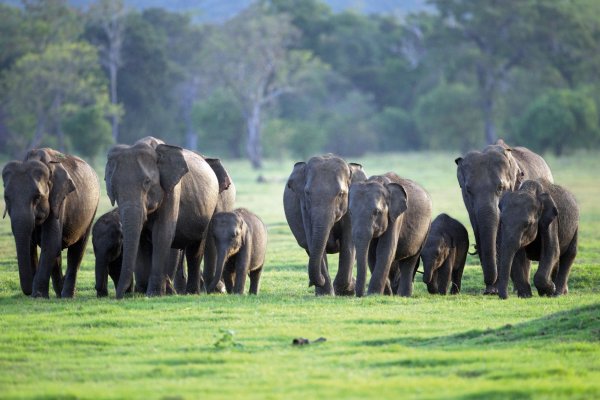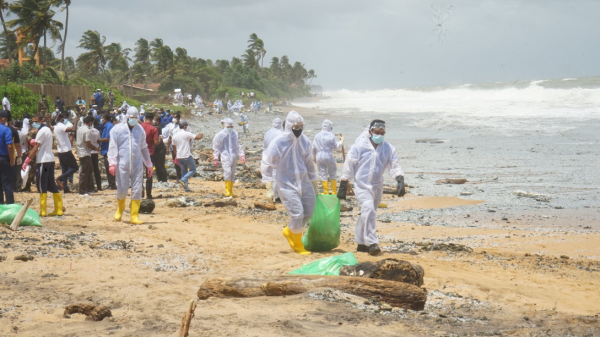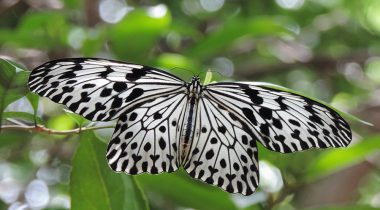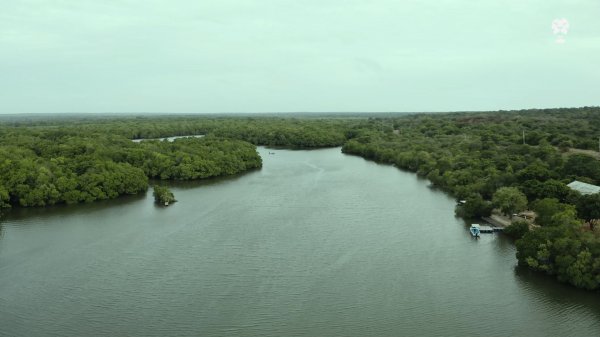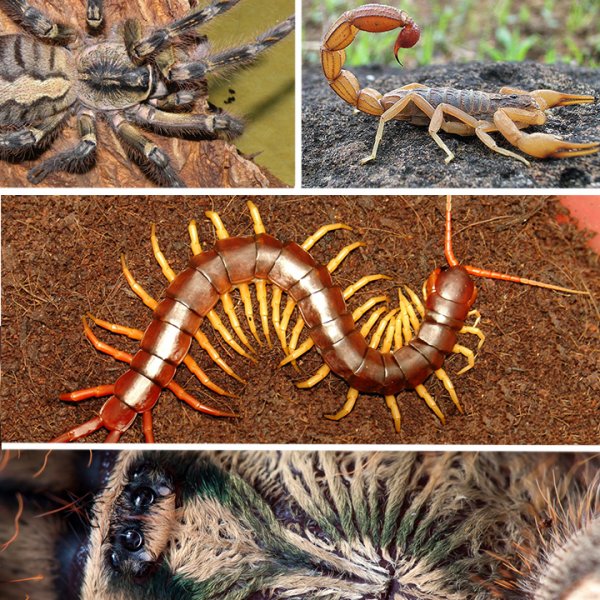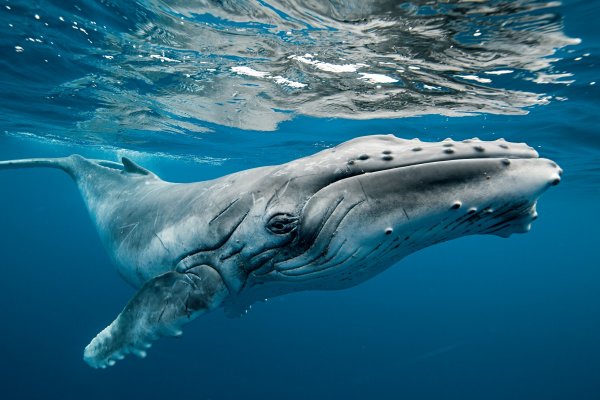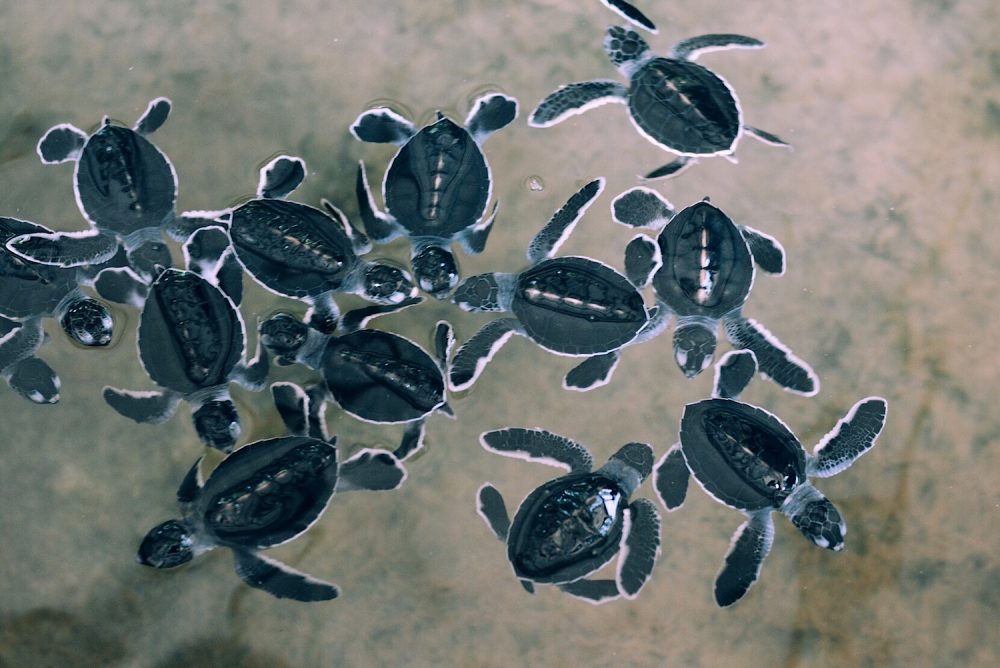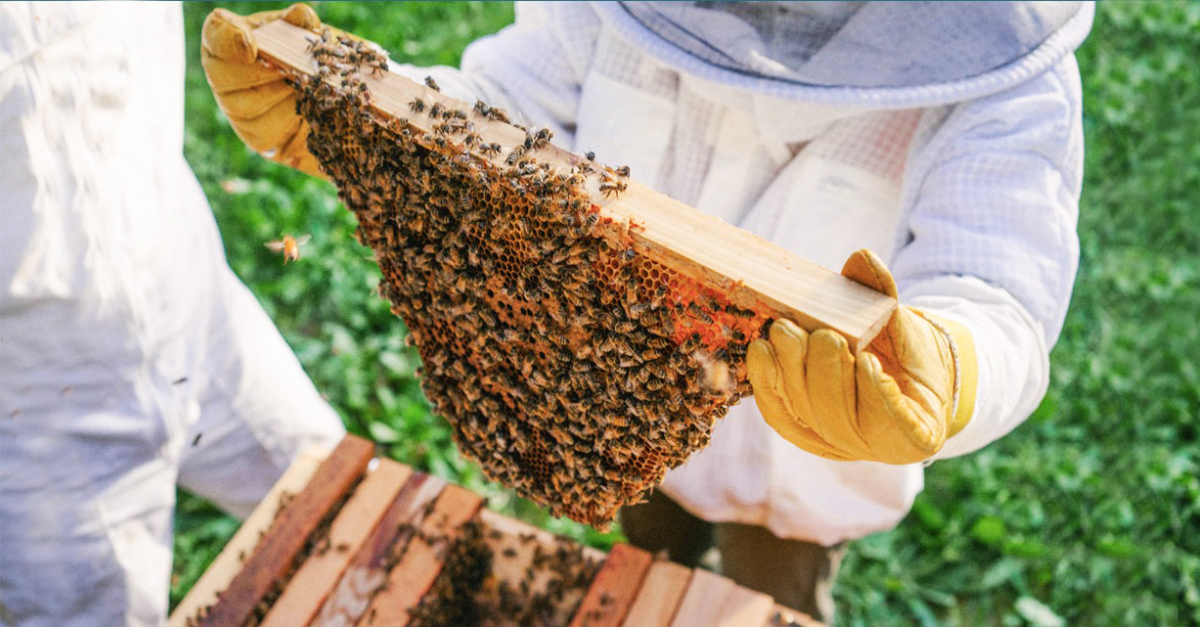
Bees were recently declared the most important living species by the Earthwatch Institute. But of all the living beings on the planet, why bees?

One primary reason is that bees are vital pollinators, on which human agriculture depends. Bees transfer pollen between plants allowing them to reproduce and grow. The Food and Agriculture Organisation (FAO) of the UN has found that 35% of global agricultural land, consisting of 87 major food crops, is dependent on pollination by bees.
Although arable crops like wheat and rice aren’t insect pollinated, many fruits and vegetables—which contribute to healthy diets—are reliant on these vital creatures. But bees are dying at a rapid rate. Up to 40 percent of invertebrate pollinator species—particularly bees and butterflies—are facing extinction. These insects, that have been linked to human society for millennia, are now under threat by the very society that helped them flourish.
Sri Lanka has a long history of wild honey gathering. The country’s indigenous Veddah community used it not just as food and as a preservative but would also trade it for other products. Even today, the community makes a ritualistic offering of a pot of mee pani (bee honey) at the Dalada Maligawa (Temple of the Tooth Relic) during the annual Esala Festival in August. Bee honey is also an essential ingredient in various medicines in the Ayurvedic medical system.
Beekeeping In Sri Lanka
The practice of beekeeping was introduced to Sri Lanka around 1940, by the then State Department of Agriculture. But is still a relatively small industry. Sri Lanka’s annual bee honey production is limited to 25 metric tons, with an additional 150 metric tons imported annually to meet local demand.
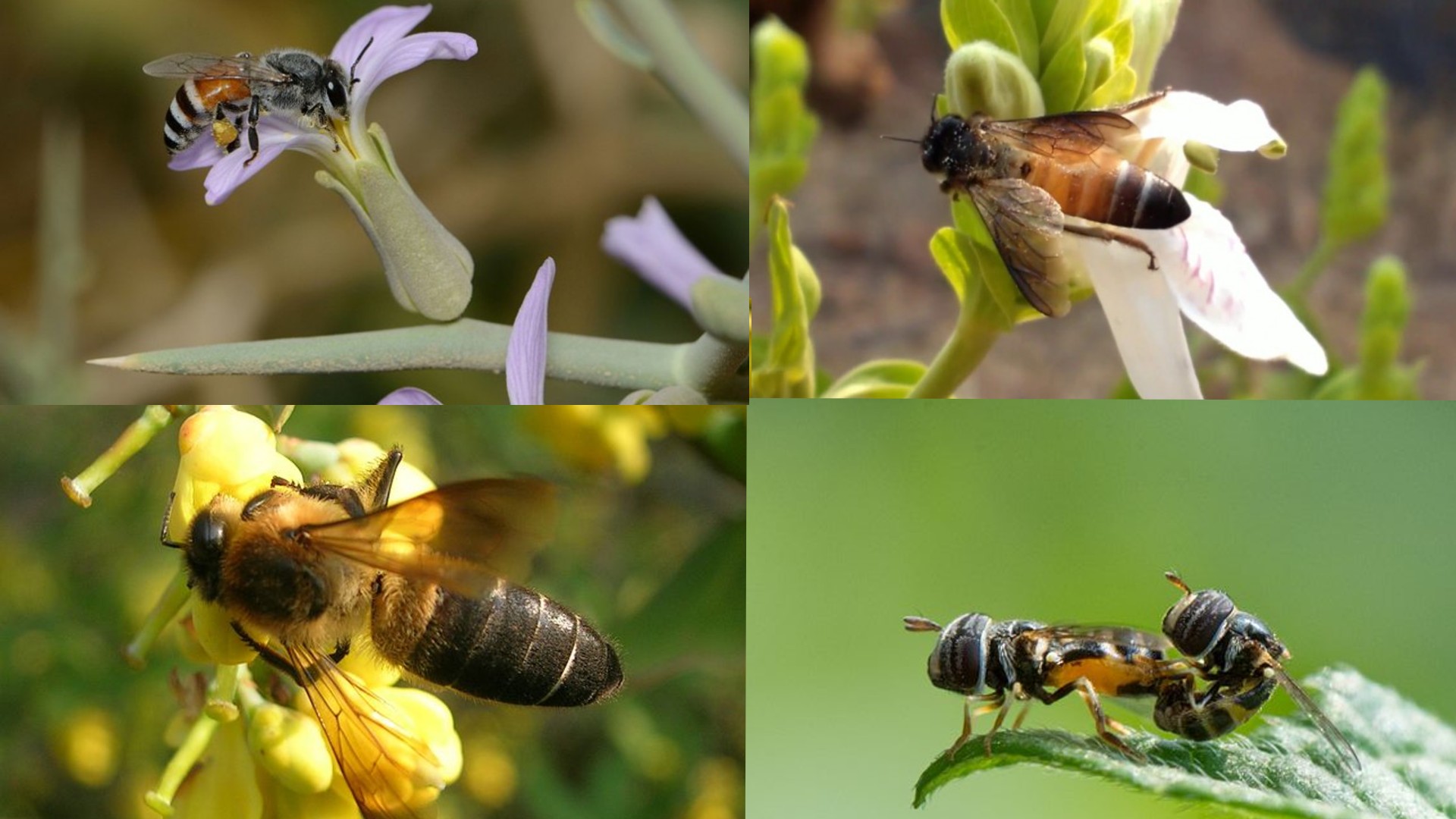
Also contributing, is the fact that only the mee massa, of just four honey bee species in Sri Lanka can be domesticated, because only it builds its hive in enclosed spaces making it suitable for beekeeping. Small, red bees, the bambara and the danduwel massa, build their hives in open spaces, such as on trees or high up on buildings, while the fourth species, the kano mee, a small stingless species, only produces small quantities of honey.
Founder of the Sri Lanka Bee Protection Organisation, Mahinda Wijesinghe, has about 25 hives in his hometown, Hantane. He also travels around the country raising awareness of the importance of bees, teaching beekeeping and how to handle bees.
Wijesinghe explained to Roar Media, that beekeeping involves two steps: firstly, setting up an incubating hive, into which either a queen bee is introduced or it is left empty to be discovered by bees. Within weeks the bees build a hive full of honeycomb, with larvae and an egg-laying queen. This incubating hive is then transferred into a panelled beebox, by carefully slicing the honey comb and attaching each slice to a single panel. The bees then continue to expand their hive in the beebox, from which honey can be extracted more easily.
“Honey production is cyclical,” Wijesinghe explained., “And we operate in different parts of the country, depending on the season.” From February to March, they operate bee boxes in the low-country wet-zone—in areas like Kegalle and Ratnapura—with the bees feeding on rubber. From July to August, they move to the up-country, to Bandarawela, Haputale and Welimada, where the bees feed on eucalyptus. The dry zone is suitable for bee cultivation throughout the year, with the bees feeding on the blossoms of medicinal plants such as Nelli, Aralu and Mee, which is what makes this variety of honey so suitable for medicinal purposes.
Honeybees are a minority among bee species. Sri Lanka has 148 species of bees, of which 21 are endemic. Most bees are classified as social bees, and the rest are solitary bees, who live alone in nests, most often underground. Unlike solitary bees and some other social bee species that are happy to feed on a variety of plants, honeybees are loyal to one or a few select plant species. This is useful, because plants require pollen of the same species to propagate. While other bees may introduce pollen from different plant species, the honeybee guarantees pollination by the same species, because it moves from flower to flower of the same plant type, cross-pollinating and causing fertilisation and seed production. Bees are so critical link to the pollination cycle, that studies have linked the decline of certain flora to the decline of specific bee species.
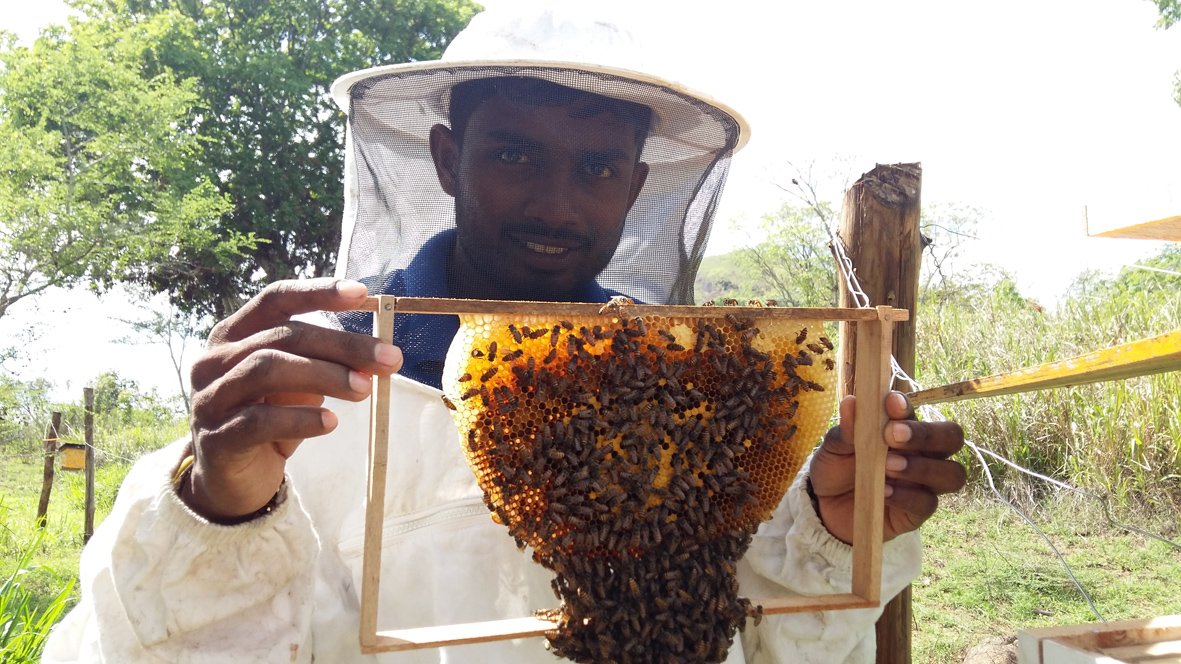
A Fragile Balance
As the pollination of various agricultural crops depends on bees, threats to bee populations also threaten our food supply. Bandara Thambavita, Secretary of the Bee Protection Organisation, has been studying the new disease affecting bees across the country, claiming his outfit was the first to detect the problem. “We first came to know about a disease affecting the bees about two years ago, and that was through our members in the Gampaha District. At that time, the beekeeping industry was shaping up quite well over there.” Thambavita said.
One of the members of the Bee Protection Organisation in Meerigama had around 300 beeboxes, and another member in Attanagalla has about 100. But when the disease broke out, the industry collapsed overnight, leaving them with only 10 to 20 healthy boxes. “Most of the diseases bees contracted up until then could be controlled by natural methods alone,” Thambavita said, “But, soon we found this was a different disease, as it was not responding to any of the conventional methods in our armory”. Thambavita added that the Agriculture Department’s Bee Development Unit recommended destroying the affected beehives as the only viable solution to the problem.
Diseases like these are not the only threat to bee populations. The use of pesticides and herbicides, as well as the growing urban sprawl, all have detrimental effects. Although, the extinction of bees would not lead to famine—since most cereal crops are wind-pollinated, the majority of fruits and vegetables are insect-pollinated and without bees these would have to be pollinated manually, or by robots—which is unlikely to happen in Sri Lanka anytime soon. Crops that are not cost-effective to hand or robot-pollinate, would likely be lost. As a result, the availability of diverse fresh produce would decline substantially, and human nutrition would likely suffer. Additionally, many animals which feed on bees, would lose their prey in the event of a die-off, threatening the precarious food chains of the natural ecosystem.

